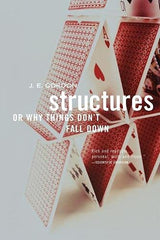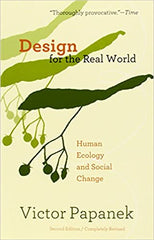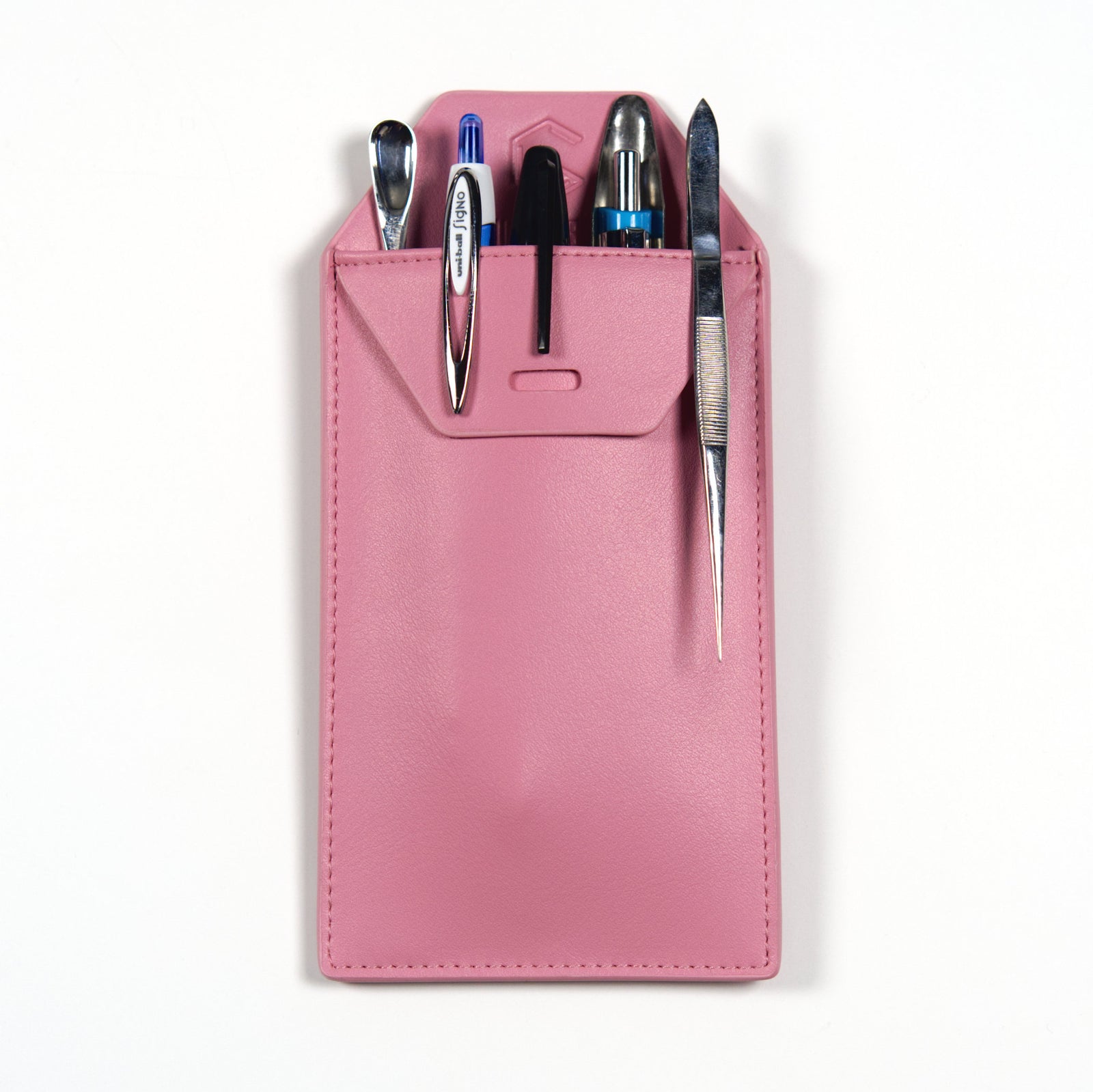Your Cart is Empty
Menu

33 Best Books for Engineers in 2025
15 min read
Not every engineering book needs to be a textbook. There’s a whole world of fiction, documentary-style and helpful reference books that can enrich an engineer’s journey in their career.
So we thought it would be fun to put together a list of 33 books that should be on every engineer's bookshelf: books that teach key lessons and principles, serve as guides and references, and help with career growth. In engineering, books are the best investment you can make, and these books are the best of the best! Happy reading!
1. To Engineer Is Human: The Role of Failure in Successful Design
Humans are prone to making mistakes and human designs are not without flaws. Failures often uncover new insights and this book will show you why ‘failure is the best teacher’. To Engineer is Human is a book that discusses the significance of researching and analyzing design failures in order to improve future designs. The book covers a huge range including the Hyatt Regency skywalk, the Mianus River bridge collapse, and the DC-10 engine servicing procedure.
This book is also a great read for non-engineers as it teaches a lot about engineering in easy-to-understand writing. We recommend this book to everyone who wants to understand more about what engineers do and how they learn from their failures.
2. Structures: Or Why Things Don't Fall Down
For a civil engineer who wants to learn more about their profession, this book by J. E. Gordon is a perfect fit. “Structures: Or Why Things Don't Fall Down” is for anyone who wants to know everything about how structures work. This book will calm your nerves and answer your questions about why suspension bridges don't collapse under eight lanes of traffic, how dams hold back—or give way under—thousands of liters of water, and what principles affect the construction decisions in a skyscraper.
3. The Design of Everyday Things
Every mechanical engineer in the design field should read this book. The Design of Everyday Things isn’t just about the design; it's also about people and how they use (or struggle to use) ordinary, everyday objects. It’s a must-read for anyone considering a career in design, particularly on the user experience. The book isn't very technical. It explains principles in a clear and persuasive manner and everything is supported by excellent practical examples.
4. The Existential Pleasures of Engineering
The Existential Pleasures of Engineering is a book for people considering a career in engineering, as well as those who are already engineers searching for a deeper look into their field. It's a fact-fueled, philosophy loaded rocketship aimed at answering the question, "What is the essence of technology?" Engineering is often perceived as cold and devoid of passion, yet this book demonstrates the profession's deep and rich rewards. Florman expertly defends engineering from the anti-technology prejudice that is prevalent in today's culture.
5. Skunk Works: A Personal Memoir of My Years at Lockheed
A popular and highly-rated classic about the top secret “Skunk Works” engineering projects at Lockheed Martin that helped win the Cold War, written by the head of the division for two decades. It covers the pinnacle of high-pressure, high-stakes ultra-secretive engineering projects and the technological game of chess that the USA was playing with the Soviet Union in the 1970’s and 1980’s. It includes anecdotes and testimonials from high-ranking government officials and pilots on revolutionary projects like the SR-71 Blackbird, F-116 Stealth Fighter and U-2 spy plane.
It's an enjoyable and inspiring read for any engineer who has a true passion for problem solving and cutting-edge technology. The reader will also take away valuable lessons for managing technical projects and teams of scientists and engineers to achieve nearly impossible goals.
6. Why Buildings Fall Down: How Structures Fail
Structural engineering is a difficult field to master. Although the vast majority of buildings survive, this book covers the many variables that can cause them to fail. The book Why Buildings Fall Down: How Constructions Fail explains why structures, such as bridges and buildings, fall down or fail. This is a fantastic piece of work by two capable structural engineers. They break everything down in a non-technical way and explain the processes and intricacies in a casual manner. It's a book every structural engineer should read.
7. The Unwritten Laws of Engineering
Inventor and engineer James Skakoon has done a great service to the field by publishing this book. The Unwritten Laws of Engineeringcovers three topics: what a beginner should know right away, "rules" that apply primarily to engineering executives, and completely personal issues for engineers. "How do you respond when you're asked to work on a project that's beneath your abilities??" "What is the single most important quality of a new professional?" "How do you react when another department asks you to do something?" All of these concerns are addressed, as well as others in this amazing book!
8. She Engineers: Outsmart Bias, Unlock your Potential, and Create the Engineering Career of your Dreams
A perfect book for a female engineer, She Engineers book helps to address a major issue not often discussed in school: the “boys” culture of engineering. The author has been an engineer in the industry for over 15 years and gives practical strategies in an easy-to-read conversational tone to help any female engineer navigate the male-dominated workplace. It’s well-structured and filled with immediately applicable advice not only on excelling in your career but keeping a work-life balance while you do it.
9. An Astronaut's Guide to Life on Earth: What Going to Space Taught Me About Ingenuity, Determination, and Being Prepared for Anything
Chris Hadfiled, the book's author, is a former Canadian Space Agency astronaut, engineer, science communicator, singer, former fighter pilot, and served as commander of the International Space Station. An Astronaut's Guide to Life on Earth is jam-packed with wisdom about life, love, commitment, determination, happiness, and what it takes to be an astronaut - both in space as well as on earth. This isn't a long or difficult book to read. It's a lot of fun and includes some great life lessons as well as a unique perspective.
10. Thing Explainer: Complicated Stuff in Simple Words
Thing Explainer is a book describing how things work using only the most common English words, with examples such as "food-heating radio boxes (microwaves)," "the big flat rocks we live on (tectonic plates)," and "the bags of stuff inside you (human organs)."
Thing Explainer is written with a sarcastic sense of humour and includes some lighter comics, as well as witty asides, in addition to the more in-depth diagrams and explanations that are clearly and hilariously labelled. So, if you're interested in how things work while also having a good chuckle, this book basically offers a bunch of illustrations and descriptions that will brighten your day!
11. The Exposed Engineer: Essential Success Principles for Engineers and Scientists
Want to set up a new engineer for career success? This book focuses on many of the soft skills that engineers don't pay enough attention to when they first move out into the job market. The author Tomasz Jasinski includes topics like dealing with failure, making continuous progress through challenges, and defining your career path in engineering. It's a shorter read that's perfect for a new engineering graduate.

12. Zero to One: Notes on Startups, or How to Build the Future
Zero to One is an essential book published on start-ups, economics, company design, and the future of technology. Throughout the book, Peter uses examples of successful companies from this century - such as Facebook, Apple, Amazon, and Tesla - to emphasize his primary ideas of creativity and wealth for a better future. It's not just a motivational book; it's also a handbook where you may jot down ideas and put them into practice. It is a must-read for engineers considering starting a business or launching a startup.
13. Engineer to Win by Carroll Smith
Carroll Smith was a professional race car driver, engineer, and novelist who had a long and illustrious career. Among amateur race drivers and engineers, Carroll's books are highly regarded. But this book is our favorite.
Engineer to Win is a great resource for mechanical engineers who want to learn more about the engineering behind racing. It also covers topics from metallurgy to fasteners to machining. Readers who have struggled to get through technical manuals will find the author's sense of humor and down-to-earth writing style refreshing.
14. Set Phasers on Stun: And Other True Tales of Design, Technology, and Human Error
Engineers working to perfect machines must recognize that they are operated by imperfect humans. Set Phasers on Stun is a gentle introduction to the topic of human-machine/computer interaction, emphasizing how little errors can lead to disaster. From Bhopal to Wall Street, one person's small technological mistakes can have disastrous consequences. Because these stories are always delivered from the perspective of one or more of the players, they are immediate and full of information. We definitely recommend it for engineers and engineering students.
15. The Mythical Man-Month: Essays on Software Engineering
If you enjoy thinking about programming and moving your projects forward, The Mythical Man-Month: Essays on Software Engineering is a near-philosophical read that will drive you to reflect and uncover the source of your problems. This collection of essays examines the software development process, but it may also be applied to project management. It may be a touch out of date and delivered in a ranty manner, but if you take the author's remarks at face value, the words are beautiful and the sentences paint pictures of humanity as well as the world of computer software development.
16. The Soul of A New Machine
The Soul of A New Machine is an engineers soap opera that follows a ragtag group of neophytes as they work to construct a groundbreaking 32-bit computer for the now-defunct Data General in the late 1970s, led by their own Captain Ahab. The author, Tracey Kiddler, was granted a once-in-a-lifetime opportunity as a journalist to monitor the team's progress from the inside, and his account reveals vast insider knowledge.
It’s a fantastic portrayal of what it's like to work in the computer industry, as well as a realistic discussion of computer design and an all-around fantastic book. Many areas of hardware, administration and the emotional complexities of engineering are discussed. You should give it a shot if you're curious about the types of people and environments that surround the cutting edge of the computer industry.
Bonus for passionate engineers:
Did you know we make a custom pocket tool to save engineers time and energy? It's got a 5-star rating on Amazon so we love to brag about it!
This laser-cut and laser-engraved stainless steel card is packed with measurement devices, unit conversions and common engineering equations. The best part: you can get it for less than $12! Since you found this page first, take $1 off with code 1ENGINEER directly through our site or for normal price on Amazon Prime. Both offer free shipping!
The Pocket Engineer at Genius Lab Gear
The Pocket Engineer from Amazon
17. Our Final Invention: Artificial Intelligence and the End of the Human Era
AI is, by definition, a difficult idea to grasp. When a complex system is manipulated, the outcome is often unknown. Our Final Invention is a fascinating look at where AI research is now and where it might be headed in the future. According to the author, we may not be able to control what we unleash. Artificial General Intelligence will lead to Artificial Super-Intelligence, and everything will be up in the air after that. We recommend anyone who enjoys futuristic technology to read this book.
18. Elon Musk: Tesla, SpaceX, and the Quest for a Fantastic Future
This biography of Elon Musk, the founder of SpaceX, quickly became a bestseller for its engaging look at the quintessential engineering hero. Biographies are often boring, but not this one. Musk’s life is a roller coaster of visionary undertakings, massive setbacks and outside-the-box thinking that will inspire any engineer to reach further in their own work.
19. Designing Engineers
What does engineering design work actually look like? Bucciarelli set out to find the answer by conducting an exploratory investigation of engineering companies and observing design in action. The book follows the development of three engineering projects: an airport x-ray inspection system, a photo printing machine, and a household photovoltaic energy system. In each scenario, author Louis Bucciarelli walks you through the full process of how a company's product is designed. Designing Engineers makes a significant contribution to our knowledge of the nature of engineering design work.
20. The Art of Doing Science and Engineering: Learning to Learn
The Art of Doing Science and Engineering is a collection of advice from a scientist and engineer who has spent his entire career in computing and research. Richard Hamming explores why scientists do what they do, how leaders differ from followers, how to recognize trends and stay focused on the core, and what changes are coming in the near future and how we will adapt. This is a fantastically insightful book that is jam-packed with ideas and technical information. This is required reading for anyone working in a technical field who wants to become exceptional at their job.
21. Design Patterns: Elements of Reusable Object-Oriented Software
Design Patterns is a fantastic book for developers and software engineers on a difficult topic. Every design pattern is thoroughly explained, including 'consequences' sections for each, as well as a section relating the given pattern to other patterns. It may be a little out of date, but it still contains a wealth of information. Any software engineer who reads it from cover to cover will be able to solve numerous design difficulties far faster than they would otherwise.
22. Life 3.0: Being Human in the Age of Artificial Intelligence
It's possible that in the not-too-distant future, we'll be working side by side with Artificial Intelligence. What is the best way to approach this new era? Should we limit the role of electronics or create powerful AI to do our bidding? Max Tegmark discusses every potential argument and point of view regarding AI in this book. Life 3.0: Being Human in the Age of Artificial Intelligence is an excellent book that everyone should read.
23. Studying Engineering: A Roadmap to a Rewarding Career
Authored by a pioneer in undergraduate engineering education, Studying Engineering: A Road Map to a Rewarding Career is a classic work on successful study strategies for engineering education. This book is fantastic for getting yourself focused and on track to reach your objectives. It's a quick read, but the advice and knowledge in the book will keep you coming back for more. It's full of interesting anecdotes, references to motivating books/essays, and a positive mindset that any aspiring engineer will appreciate.
24. 101 Things I Learned® in Engineering School
101 Things I Learned® in Engineering School is a helpful book that anyone can appreciate, even if they aren’t in engineering. It's easy to read, understand, and well-illustrated. This book is a clear-cut definition of 'everything's simplified,' which is why it's extra fun if you study engineering.
It connects engineering to everyday life, which the reader can readily relate to. We recommend this book to everyone with an interest in engineering, design, mathematics, or science.
25. Design for the Real World: Human Ecology and Social Change
One of the most frequently read design books in the world is Design for the Real World. Victor Papanek's book slammed marketing-driven design and uncovered a slew of problems caused by irresponsible design. If you're a product designer or engineer, this book is a must-read. Design for the Real World: Human Ecology and Social Change delves into the basics of design, such as what it should accomplish and what paths it might pave. Although it is a little out of date, it is still a good reminder of how much work remains to be done in order to build a sustainable environment.
26. Normal Accidents: Living with High-Risk Technologies
Normal Accidents: Living with High-Risk Technologies is an interesting look at the complex systems in our lives and how, given their complicated inner workings, failures are unavoidable. It provides a high-level approach and demonstrates that incidents can be predicted and should be expected. It's a look into the realm of hard engineering, including nuclear power, dams, chemical plants, and petroleum refineries. If you prefer diving deep, you'll appreciate the author's clear unpacking of these various systems and dynamics.
27. Why Buildings Stand Up: The Strength of Architecture
Why Buildings Stand Up: The Strength of Architecture describes how structures stay upright in the clearest, simplest terms possible. It discusses loads, materials, and various ways of organizing them in a never-ending battle against gravity. Along the way, the book examines certain famous landmarks, such as the pyramids, the Eiffel Tower, and the Hagia Sophia, to see why they were created the way they were. This is a wonderful primer for anyone interested in pursuing a career in engineering/architecture, as a refresher for engineering students, or simply as a fun read for engineers.
28. Engineering in the Ancient World
Engineering in the Ancient World is the book for you if you're curious about how things were done in the year 0 AD. It discusses a variety of ancient technologies in sufficient detail for the reader to grasp the concept while also marvelling at the fact that the ancients figured out how to do these things. We were astounded to learn how advanced engineering had grown throughout the Classical period. This book, written in a conversational tone with a few very British jokes thrown in, also includes an extensive bibliography for those who want to dig deeper.
29. The Great Bridge: The Epic Story of the Building of the Brooklyn Bridge
The Brooklyn Bridge, one of the oldest roadway bridges in the United States, is a hybrid cable-stayed/suspension bridge in New York City. The Great Bridge: The Epic Story of the Brooklyn Bridge is an interesting account of the Brooklyn Bridge's construction. We get a glimpse into 1870s New York as we see a city, state, and country jump into the modern era. The book goes into considerable detail regarding the bridge, its design, and the methods used to build it. It’s a highly recommended book for engineers, particularly those working in the fields of structural and civil engineering.
30. Engineering and the Mind's Eye
Engineers will find this book interesting because it provides a sort of overview that may be quickly lost when solving specific problems during training or when working as an engineer. Engineering and the Mind's Eye is a book that takes a unique look at the history of mechanical and civil engineering. The author demonstrates how engineering education has shifted from a scientific or analytical approach to a more practical or nonverbal approach. If you're interested in the history of engineering or the relationship between technology and culture, you'll find plenty to keep your mind occupied here.
31. The Art of Electronics
The Art of Electronicsis known as the electronic bible, and it's a must-have knowledge source for mastering the fascinating world of electronics and devices. Rather than the lengthy mathematics seen in electrical engineering textbooks, this book emphasizes intuitive comprehension. It's jam-packed with real-life devilish down-to-earth wisdom that could take days to unearth from other sources. It's the ideal electronics book for "what they don't teach in school." We strongly recommend any electrical engineering student or graduate to read it.
32. Electrical Engineering 101: Everything You Should Have Learned in School...but Probably Didn't
Electrical Engineering 101 is full of rules of thumb and anecdotal explanations and is written in a cheeky humorous tone. This is a fantastic book that covers the fundamentals of electrical engineering and was written from the ground up to help you learn and apply electrical engineering ideas. This book is ideal for anyone who wants to learn more about electronic components. It’s more concerned with the function of components than with theory and mathematics. It's a terrific supplement to your textbooks to help you better understand the topics. Any Electrical or Computer Science major would benefit from reading this book.
33. The Toyota Way, Second Edition: 14 Management Principles from the World's Greatest Manufacturer
The Toyota Way is that one perfect book for an industrial engineer that explains Toyota's global reputation for quality and reliability, as well as its management principles and corporate philosophy. For an industrial engineer who usually works in manufacturing, a book from one of the world’s greatest manufacturers is a rare gem where they can gather information on how to improve processes, build quality into workplace systems, and find low-cost but reliable alternatives to expensive new technology.
Frequently Asked Questions (FAQs):
What books should an engineer read?
Engineers should read books that teach key lessons and principles, serve as guides and references, and help stir their passions for engineering.
Here are our favorites:
- To Engineer Is Human: The Role of Failure in Successful Design
- Structures: Or Why Things Don't Fall Down
- The Design of Everyday Things
- The Existential Pleasures of Engineering
- Skunk Works: A Personal Memoir of My Years at Lockheed
- Why Buildings Fall Down: How Constructions Fail
- The Unwritten Laws of Engineering
- She Engineers: Outsmart Bias, Unlock your Potential, and Create the Engineering Career of your Dreams
- An Astronaut's Guide to Life on Earth: What Going to Space Taught Me About Ingenuity, Determination, and Being Prepared for Anything
- Thing Explainer: Complicated Stuff in Simple Words
- The 4-Hour Chef: The Simple Path to Cooking Like a Pro, Learning Anything, and Living the Good Life
- Zero to One: Notes on Startups, or How to Build the Future
- Engineer to Win
- Set Phasers on Stun: And Other True Tales of Design, Technology, and Human Error
- The Mythical Man-Month: Essays on Software Engineering
- The Soul of A New Machine
- Our Final Invention: Artificial Intelligence and the End of the Human Era
- Elon Musk: Tesla, SpaceX, and the Quest for a Fantastic Future
- Designing Engineers
- The Art of Doing Science and Engineering: Learning to Learn
- Design Patterns: Elements of Reusable Object-Oriented Software
- Life 3.0: Being Human in the Age of Artificial Intelligence
- Studying Engineering: A Road Map to a Rewarding Career
- 101 Things I Learned® in Engineering School
- Design for the Real World: Human Ecology and Social Change
- Normal Accidents: Living with High-Risk Technologies
- Why Buildings Stand Up: The Strength of Architecture
- Engineering in the Ancient World
- The Great Bridge: The Epic Story of the Brooklyn Bridge
- Engineering and the Mind's Eye
- The Art of Electronics
- Electrical Engineering 101: Everything You Should Have Learned in School...but Probably Didn't
- The Toyota Way, Second Edition: 14 Management Principles from the World's Greatest Manufacturer
Engineer’s Gift Bundle
Need a unique engineering gift? I put together a Engineer Gift Bundle just to make it easy for you. It includes The Pocket Engineer and Engineering Word Magnets, plus a few fun science stickers. You'll save over 20% by bundling them together, so grab this and you can stop your search here!
- Engineering Word Magnets
- Physics Word Magnets
- Science Basics Word Magnets
- Starter Word Magnets (144 tiles of connector words)
- The Pocket Engineer pocket ruler and reference
- Engineering is for Everyone sticker
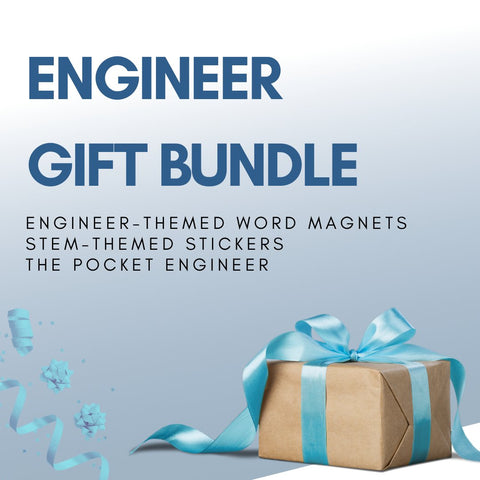
Author
Gifts Lists by Engineering Major
Stay up to date
Drop your email to receive new product launches, subscriber-only discounts and helpful new STEM resources.
Disclosure
As an Amazon Associate I earn from qualifying purchases.
Most popular in Engineering
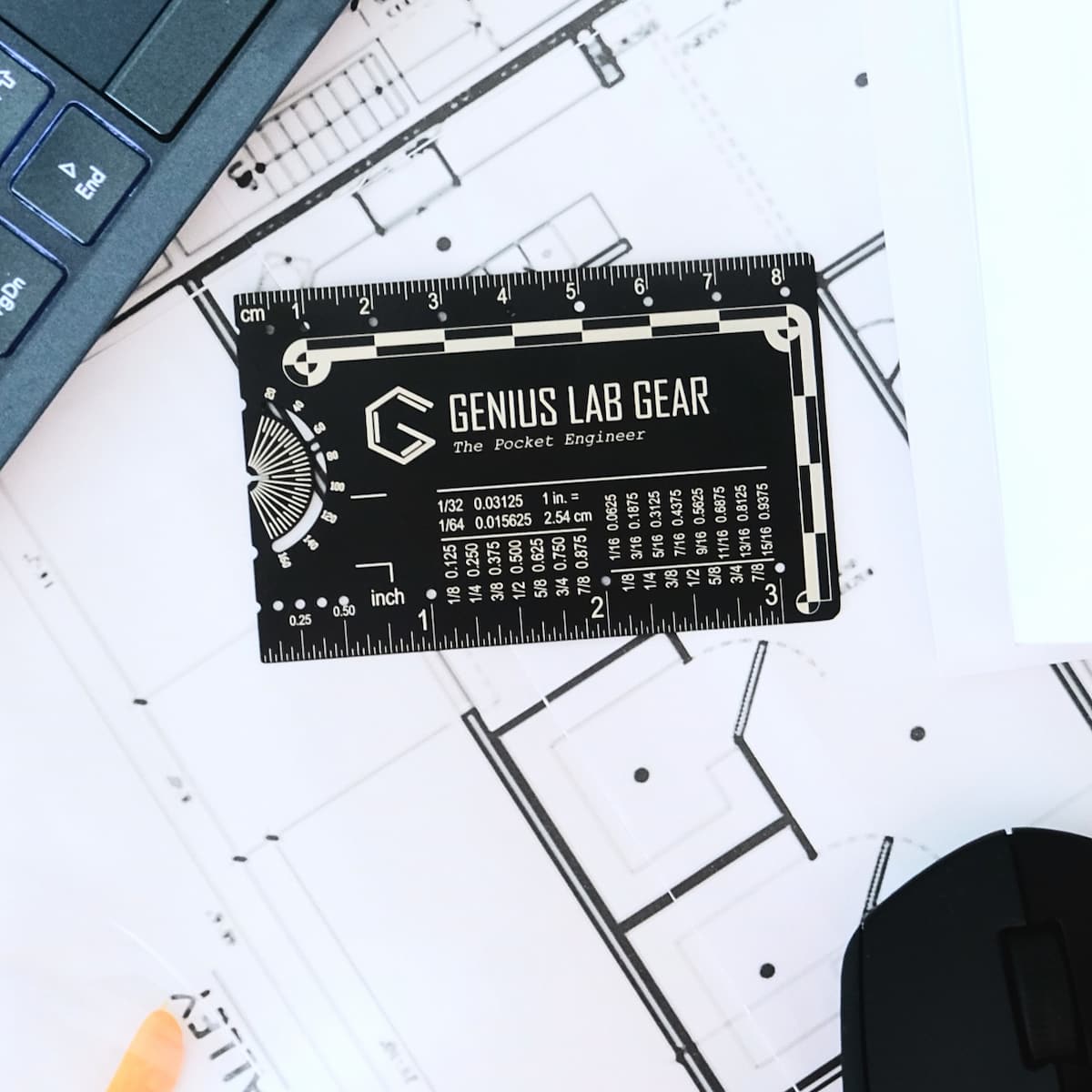
Pocket Engineering Tool
Keep your most-used unit conversions handy for quick calculations, and use the built-in ruler, compass and protractor to sketch out your best ideas. All in the size of a credit card.
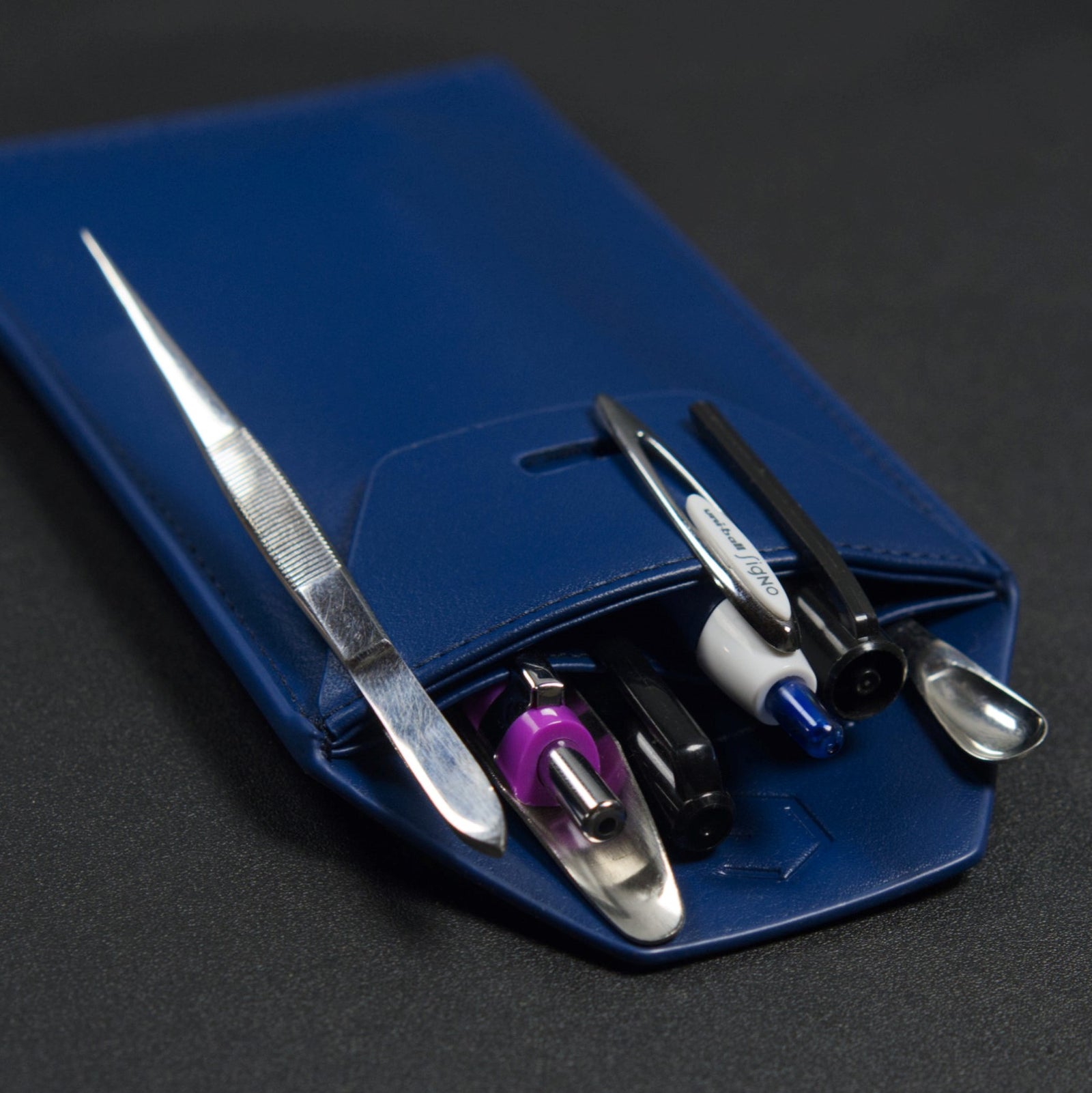
Protect your shirt pocket
We're making pocket protectors cool again. Your shirt pocket is about to transform into a hub for all of your favorite pens, markers, and tiny machine tools, without wearing holes through the bottom.
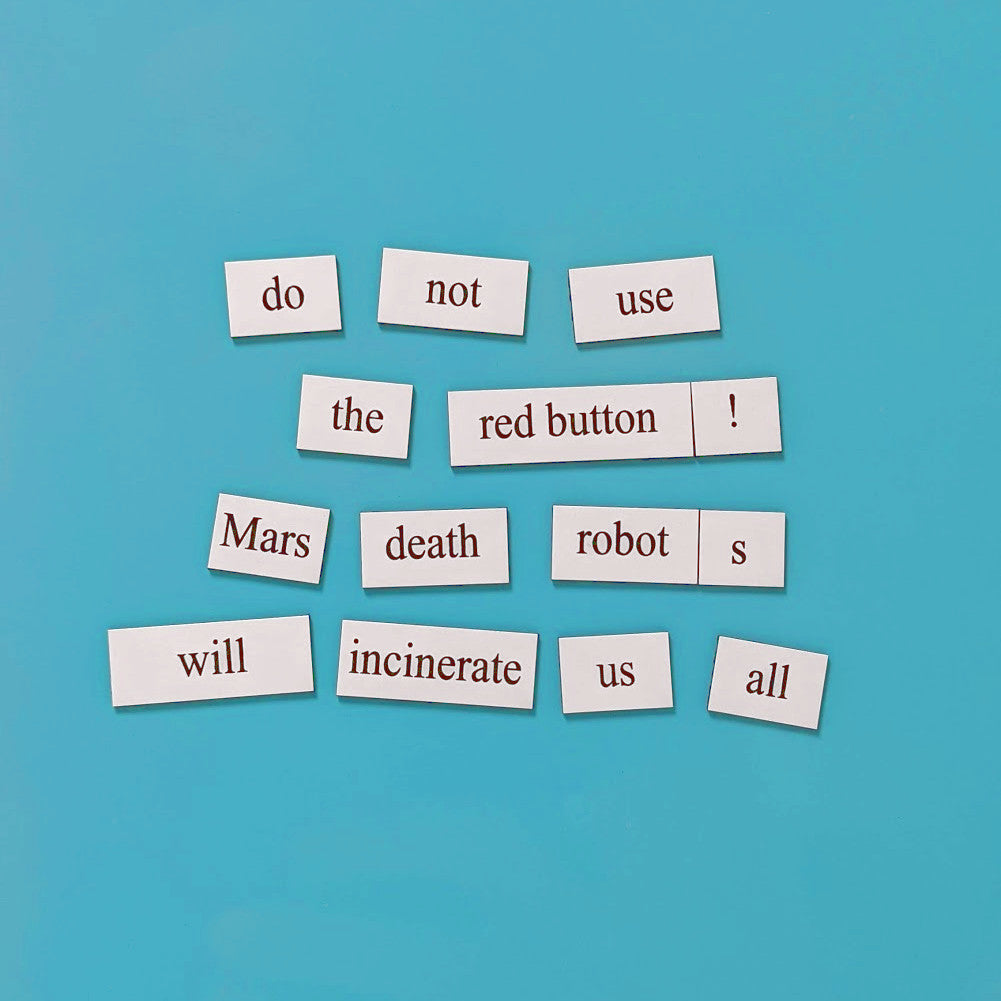
Engineer word magnets for office fun
Leave a mysterious rant or engineering poem to your coworkers to keep them guessing. Or take a creative break to loosen up your brain for the next project. All you need is a magnetic surface.

The Ultimate Lab Coat Guide: 5 Types Every Scientist Should Know
5 min read
After spending three years researching lab coats and surveying over 1,500 scientists in what I call "The Lab Coat Project," I've discovered something troubling: most of us are wearing the wrong lab coat. Let me break down the five major classes of lab coats you'll encounter, so you can make an informed decision that keeps you safe and comfortable in the lab.

Do Lab Coats Have to Be White?
4 min read
Ever wondered why lab coats are white? Discover the surprising history behind the iconic garment and why today’s scientists might wear more than just white in the lab.
Engineering Gifts Collection
Best-selling gifts for engineers of all types including Mechanical, Civil, Electrical, Aerospace, Chemical, Industrial, and Materials Science. These small items from $10-$50 make nerdy stocking stuffers for college engineering majors and professional engineers alike.
If you can't decide, just grab the engineer gift bundle to create a kit with a little of everything. From stickers, to Pocket Tool gadgets, to geeky word magnets and a retro pocket protector - this collection will be unique and win you that smile for their next birthday, graduation, or Christmas present.
Carbon-neutral shipping on all orders
9248kg
shipping emissions removed
That's like...
23673
miles driven by an average gasoline-powered car

